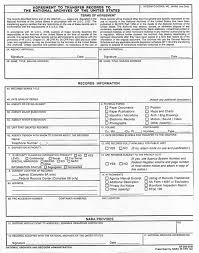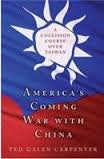
This review/summary is intended for undergraduates looking at China or military strategy in relation to China.
Martin Jacques’ huge book is somewhat inappropriately titled. Only relatively small sections concern themselves with the rise and future of China and instead focus on the current state of China and how it relates to international relations today.
Jacques is clear however on his prophesy that:
‘’the rise of China will change the world in the most profound ways’’ p12.
He also states the rise will not be 1) only economical 2) be Western in execution and 3) part of a complaint international community.
The author anticipates a future where Chinese will be easily identifiable and invokes Huntington’s ‘fault lines’ to illustrate this. Despite European multiculturalism the future identities between Han Chinese and whites will be distinguishable.
Jacques, an editor for far left academic journals refutes JM Roberts claim that
‘’it is clear that the story of the west is the story of mankind, its influence so diffused that old oppositions are meaningless’’ p45.
Japanese culture did not westernise so why would Chinese? Jacques reminds us of the ‘century of humiliation’s suffered by the Chinese from a British diplomatic visit in 1793 to the occupation of Hong Kong in 1842 after the Opium Wars. And that there was no real sovereignty during the Qing Dynasty. This got worse not better and China was thought, at least by Jacques to have balkanised up to 1949 when Mao came to power.
Chinese identity remained strong as only the major port regions such as Macao and Hong Kong where developed and westernised. The ‘inner self’ of the Chinese was never subordinated.
Jacques leaves us thinking maybe the west should wish it did fully colonise China as it did the Middle East.
This humiliating time and partial occupation along with the remaining Chinese identity made Mao’s jobs of unifying China very easy. The author really does believe this as he cements it by saying:
‘’A Chinese nation state was forged under the leadership of Communists and Marxism, however more to do with Chinese nationalism with reassertion of Chinas former Glory’’ p97
Jacques then apologises for Mao with his claim that phase 1 of Communist rule brought industrialisation not seen for 100 years and 1949 to 1978 lay the foundations for growth.
He observes that we in the west are not ready for ‘Easternisation’ and we could be running into an inevitable problem because of it. Chinese language and news will permeate our lives in the West and we are as unprepared as we were for the transformation after Mao’s death.
The idea that oil per barrel may rise to $200.00 before 2020 allows us to look at the security issues we may experience in the near future. It is not just the democratic peace theory that poses an issue for peace theorists. Its quick introduction to China would cause growth problems as it has in Russia and India compared to China and would make the huge state vulnerable. Economic rise like Chinas and democracy don’t go together. Jacques reminds us that neither the US nor UK economic growth happened in fully democratic environments at home never mind in colonies. In fact according to the statistics that say China is only 50% through the transition and 50% of Chinas population still peasants it would be the worst time to democratise.
China has made effort to reach out. The 1994 Shanghai 5 treaty with Central Asian states and Russia and including Uzbekistan in 2001 was meant to tackle Islamic extremism and foster relationships but is far more telling for it’s the beginning of Chinas multilateral agreement making. It was successful too! Iran, India, Pakistan all became ‘observers’
Chinas reach also extends to territory it believes it owns in the South China Sea such as the Diayou/Spratly and Paracel Islands that mean it is in dispute with Japan, Vietnam and The Philipines respectively. China does not recognise Maritime Law as the US sees it. Chinese artefacts found on the island and an historic claim are all it sees as needed.
There is hope however, sovereignty in China does not take the Westphalia view. Deng Xiaoping in 1984 said that sovereignty can be put on hold and economic development for China and its possible future land comes first. As with Hong Kong, China can wait and then do very little change when it does in fact get ownership. In fact China can be said to have been patient and respectful. It knows it can, Jacques convincingly offers that 1.5 billion Chinese and local populations in the 10, 20 30 million bracket is nothing in Clausewitzian strategic terms. Territory with India is also at stake but as a nuclear power and the relative meaninglessness of the Kashmir region means this can be forgotten.
Taiwan however, that is ‘’unfinished business’’ p299. Chinas sees Taiwan as truly belonging to the mainland and studies Jacques cites show Taiwanese identity is so malleable it is only a matter of time before it does so.
The US may soon consider Taiwan to risky to continue giving a security guarantee as:
‘’China is not so far from achieving hegemony in the region’’ p315
Chinas relationship with Africa is fascinating. In 2007 40% of the continents cement was uses in the middle kingdom and the licences for mining are up for grabs as Africa unopposed compared to US presence in the Middle East. In 2009 following the Shanghai 5 success, 48 African states came to a Beijing conference and $5billion was promised including hospital building and granting of university places in Chinese universities. 100% of Angolan oil was the kind of makeweight agreed.
Chinas friendship with Iran could impinge its international reputation but since 1979 when US and UK stopped dealing with Iran, Chinas has had a free hand and has made a 2004 oil deal that could also satisfy Chinese want for Iran to become or remain a regional power. This would make China dominant in both west and east Asia. Maybe China are getting too big now? Russia were quick to buy up ex US army bases in central Asia when it became available and the US are worrying about Chinese deals with nuclear India and Pakistan.
The US has far, far greater military power than China thanks to an embargo of EU and US weapons. Russia are the only arms dealers China can do business with and they have incentives to stem the flow of offensive and defensive weapons. Despite Chinese military being modernised recently at the time of publication China does not have an aircraft carrier.





